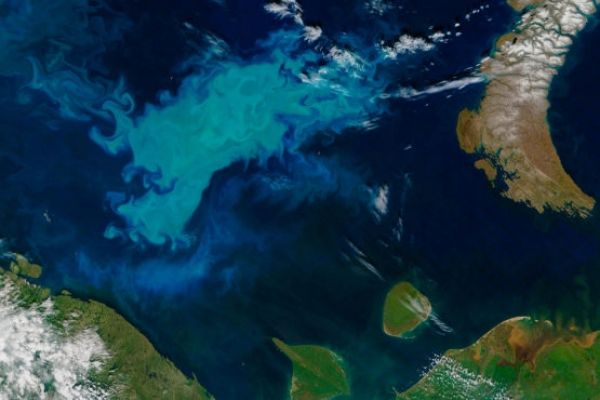While once linked to melting sea ice, the increase is now propelled by rising concentrations of tiny algae.
Scientists at Stanford University have discovered a surprising shift in the Arctic Ocean. Exploding blooms of phytoplankton, the tiny algae at the base of a food web topped by whales and polar bears, have drastically altered the Arctic’s ability to transform atmospheric carbon into living matter. Over the past decade, the surge has replaced sea ice loss as the biggest driver of changes in uptake of carbon dioxide by phytoplankton.
The research appears July 10 in Science. Senior author Kevin Arrigo, a professor in Stanford’s School of Earth, Energy & Environmental Sciences (Stanford Earth), said the growing influence of phytoplankton biomass may represent a “significant regime shift” for the Arctic, a region that is warming faster than anywhere else on Earth.
Continue reading at Stanford University
Image via Stanford University


